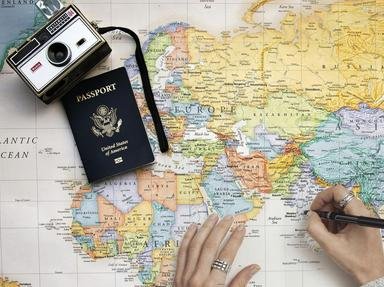Quiz Answer Key and Fun Facts
1. Djibouti's N9 road takes the traveller past a crater lake, Lac Assal, the shores of which are the lowest land in Africa. It is fed by hot saline springs replenished by the nearby waters of the Gulf of Aden, and its western end is a massive salt pan which is mined by local tribes people. The salt is taken by camel caravan to a landlocked neighbouring country.
Which country is this?
2. A trip along Ethiopia's major road No. 2 takes you through the Afar (or Danakil) Depression. This is a triple junction where three tectonic plates are moving away from each other and are expected to turn into a new ocean after millions of years.
What is the other country in the world where geologists can observe the formation of oceanic crust on land?
3. A drive along China's G312 national road takes you to the area known as the Turfan (or Turpan) Depression near the borders of Russia, Kazakhstan, Kyrgyzstan and India. It is bounded by geological faults, some of which originated in the Permian (300-250 million years ago), but some of which were produced by a major event around 50 million years ago.
What type of tectonic activity accounts for the deformations found in this area?
4. The Caspian Sea is a remnant of an ancient ocean which has become landlocked as a result of tectonic uplift, caused by the same geological event that created the Alps.
Which of these pieces of information about the Caspian Sea is UNTRUE?
5. The village of Holme Fen in Cambridgeshire is reputed to be the lowest point in England at about three metres below sea level. It lies to the east of what was formerly known as the Great North Road (the A1), which links London to a Scottish city 409 miles away.
Where is the northern terminus of the A1?
6. One of the highlights of the typical tourist desert trip is watching the sun rise across the Chott El Jerid as you stand on the side of the Tunisian P16 road in the cool of the early morning. The Chott (salt lake) is several metres below sea level and may have a volcanic origin or be a remnant of a former inlet from a nearby body of water.
Where does Tunisia have a coastline?
7. The world's lowest stretch of road is part of Israel's Route 90 which joins Eilat in the south, near the Egyptian border, with Metula near the northern border with Lebanon.
Along which part of its route does it reach its lowest point?
8. US State route 111, otherwise known as Grapefruit Boulevard, runs alongside the eastern shoreline of California's Salton Sea, the state's largest lake. Due to changes in balance between inflow, precipitation and evaporation, the lake comes and goes over geological time.
When did the current lake start to fill up?
9. If you were to take Ruta Nacional 3 from Buenos Aires to Tierra del Fuego, as you traveled through Patagonia you could take make a detour and visit the southern hemisphere's lowest point, the shores of Laguna del Carbon ("Coal Lake"). Like many of the world's lowest lakes, it has no outflows.
What scientific term is used to describe such a lake?
10. The recommendations of the Lake Eyre National Park Authority are for visitors to "travel in convoy and carry reserves of fuel, water and food". Camping is free, but a donation for the Royal Flying Doctor Service is encouraged.
Where is Lake Eyre?
Source: Author
bucknallbabe
This quiz was reviewed by FunTrivia editor
Pagiedamon before going online.
Any errors found in FunTrivia content are routinely corrected through our feedback system.

